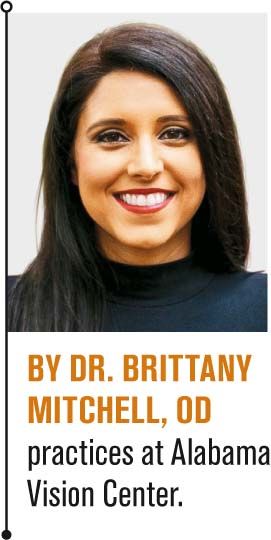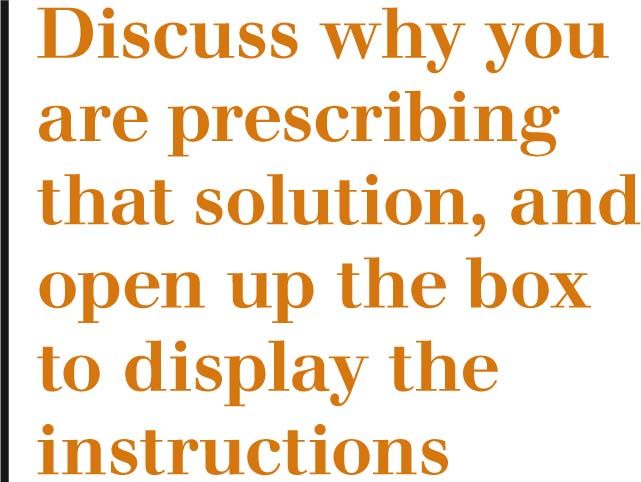5 ways to start the lens care conversation with patients
Do more than hand patients a box-prescribe instead of recommend

Many times-and more often than not-our patients purchase a different contact lens solution than what we recommended in office.
Was it because we as their eyecare practitioner just handed our patients a contact lens solution sample, hoping they would purchase the same exact brand? Did we even have a discussion regarding what type of solution we recommend for our patients?
Related: 5 lens care tips for traveling patients
Emphasizing the contact lens solution as a prescription instead of a recommendation can lead to best practices. Try these five methods for discussing contact lens solutions with your patients.
1.Ask what solution they have been using
During the exam, discussing their current habits and solutions gives you an idea of what your patients are already doing. Many patients don’t know what brand they are using because they typically purchase the cheapest solution at the pharmacy. This is more than likely because a solution was never discussed or prescribed to them. Changing your patients’ habits can lead to better care.

2. Discuss lens care while still in your office
Start a conversation about the solution that you hand to your patient. Discuss why you are prescribing that solution, and open up the box to display the instructions.
Carefully review the cleaning process of their contact lenses:
• Show patients the brand-new case
• Instruct patients to discard their old case
• Explain how often to replace their cases
• Demonstrate how to properly fill the case
• Talk about morning and evening care
Related: How to keep athletes’ eyes healthy in contact lenses
This all seems so easy in our minds, but often eyecare practitioners don’t take the few minutes to review lens care. If patients believe you don’t think it’s important, neither will they.
It’s important to have this conversation because many patients don’t ask questions. Patient misunderstanding can lead to complications. Taking a few extra minutes going over this with your patients will go far.
3. Provide a sample of the prescribed contact lens solution
By providing your patients with a sample of your prescribed contact lens solution while in office, your patients will then have a visual that they can take home with them. This is especially helpful when patients are purchasing larger bottles at the grocery or pharmacy.
Related: 6 contact lens wear and care habits for patients and ODs
4. Supply handouts about proper care of contacts lenses
Some patients are visual learners, and a lens care list of instructions will help to reinforce in-office training. They may not remember what you told them in the office or may have questions when they get home.
Be sure to include a space on the handout for you or your technician to write in the name and brand of contact lens solution you prescribe.

5. Write the solution brand on the contact lens prescription
When writing the prescription for your patients’ contact lenses, add on the prescription pad as well the name of the contact lens solution you prescribed.
Just as we prescribe medications for glaucoma or bacterial conjunctivitis, we too should prescribe contact lens solutions.
By prescribing instead of recommending, this emphasizes to our patients the importance of lens care when purchasing their solutions at the pharmacy.
Related: Improper contact lens use linked to permanent eye damage




.png&w=3840&q=75)











